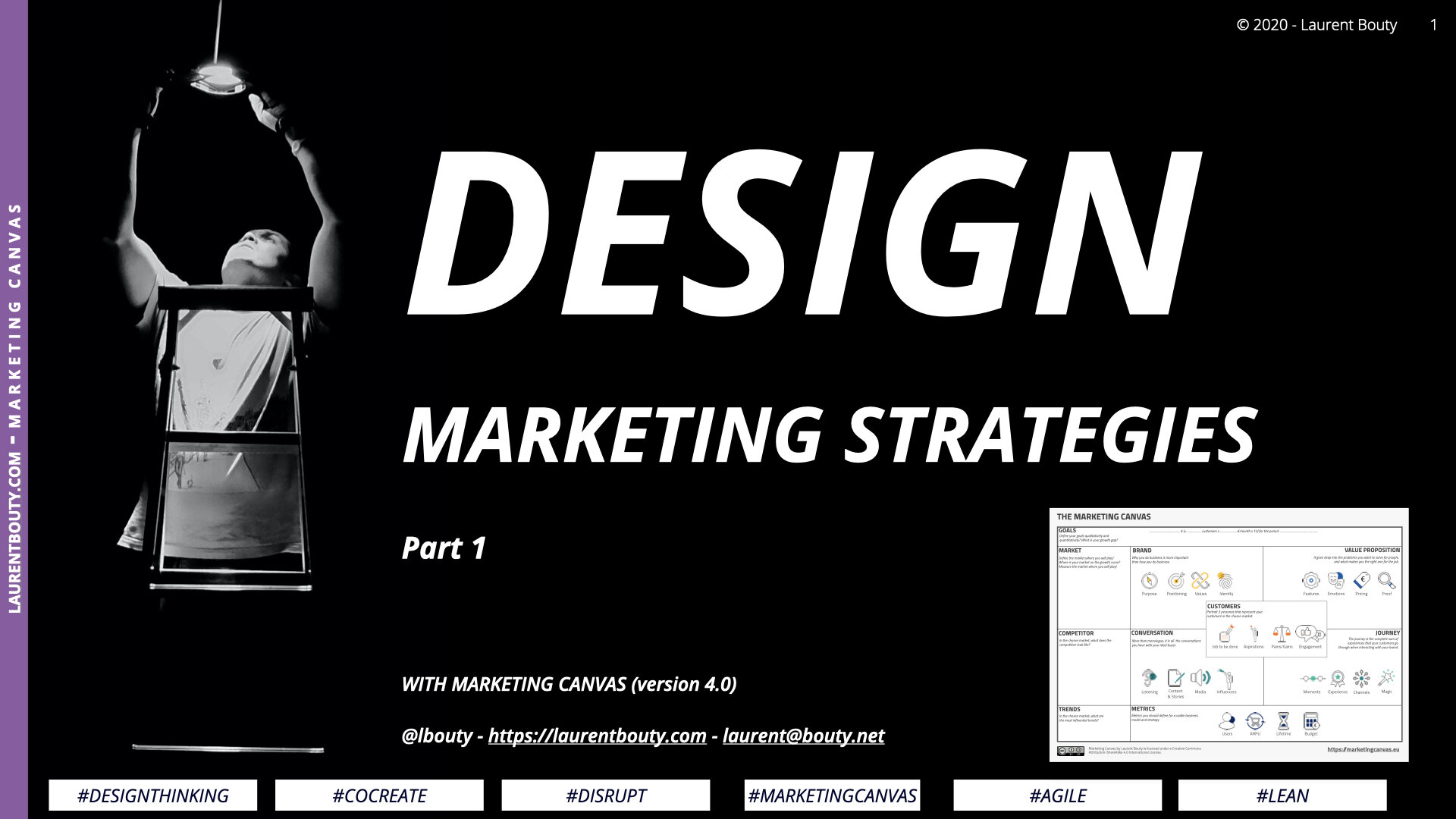Last update: 14/06/2023
In a nutshell
In a world dominated by digital and physical touchpoints, the understanding and orchestration of Channels form a crucial part of any marketing strategy. This comprehensive guide explores Channels in marketing as a sub-dimension of the Marketing Canvas by Laurent Bouty. It delves into the roles channels play in customer interactions, highlights key considerations such as interaction, information, and context, and provides practical tips on choosing the right tools.
The guide further translates these insights into action steps and underscores the significance of continuous evaluation and improvement for optimal channel performance. A detailed look into a use case example of 'Green Clean' elucidates these concepts with real-world relevance. Finally, the guide helps you assess your own marketing strategies with detailed explanations for varying scores in the evaluation process and proposes recommendations for enhancement. This guide serves as an invaluable resource for marketers, entrepreneurs, and non-marketers alike to navigate the complex terrain of channels in marketing.
In the Marketing Canvas
The Marketing Canvas is a powerful tool for entrepreneurs and non-marketers to build a robust marketing strategy. It consists of six meta-dimensions, each with four sub-dimensions, for a total of 24 sub-dimensions defining your Marketing Strategy. One of these sub-dimensions is CHANNELS, which falls under the JOURNEY meta-category
Defining Channels
At its heart, marketing is a communication-centric discipline. It involves reaching out to the right audiences, at the right time, through the right means or "channels." In the context of marketing, channels are not just physical or digital spaces where interactions occur. Instead, they encapsulate the entirety of a customer's experience with a brand or service.
It's important to understand that from a customer's perspective, channels aren't individual silos they move through but an interconnected network that shapes their overall experience with your brand. The customers focus on accomplishing their goals rather than navigating through specific channels. This goal could be anything from learning about a product, making a purchase, getting post-sale support, or engaging in any form of interaction with your brand.
Common channels include print media, websites, mobile applications, voice calls, physical locations, and more. Each channel brings unique opportunities and constraints, often determined by the method of interaction, nature of the information shared, and the context of the interaction.
Interaction: How does the customer connect with your brand? This could be via touch devices, keyboards, keypads, voice interfaces, and more.
Information: What is the nature and purpose of the content exchanged? Is it promotional, educational, or transactional?
Context: What is the emotional and environmental state within which the interaction occurs? This could involve factors like the customer's mood, location, or cultural nuances.
By defining channels using these facets, businesses can identify the unique opportunities and constraints each channel presents, thereby enabling them to deliver the best possible customer experience.
As part of your marketing strategy, it's vital to ensure seamless integration across all your channels. Whether it's a brick-and-mortar store or a mobile app, the customer experience should be consistent, personalized, and devoid of silos.
Tools for Channels
As we navigate the digital era, a multitude of tools and technologies exist to enhance channel management. These range from Customer Relationship Management (CRM) software that ensures consistent communication with customers across multiple channels, to data analytics tools that provide insights into channel performance.
One key tool is a Content Management System (CMS), which allows for the creation, management, and modification of digital content across different channels. With CMS, you can ensure consistent messaging and information across various touchpoints.
Another tool is Social Media Management software. In today's world, social media channels are a crucial component of the customer journey. They facilitate direct and real-time interactions between brands and their customers. Social Media Management tools help manage and optimize these interactions.
Further, channel analytics tools provide insights into how customers interact with different channels, helping businesses identify areas of improvement and potential opportunities.
Translating Channels into Action
Once you've defined your channels and selected appropriate tools, the next step is translating these elements into actionable strategies. This includes:
Customer Segmentation: Identify and understand your different customer segments. Different segments might interact with your brand differently, preferring one channel over another.
Content Strategy: Define the type of content you will share on each channel. Keep it relevant to your audience and in line with the channel's nature.
Personalization: Use CRM data to personalize your customers' experience across all channels. Personalization can lead to higher engagement and customer satisfaction.
Integration: Ensure that all your channels are interconnected, allowing customers to switch seamlessly from one to another without interruption.
Question
Are Channels of your user journey helping you achieve your goals?
Evaluation is a critical aspect of channel management. It helps identify what's working, what isn't, and how things can be improved. Rating your agreement with the following statements can help in evaluating your channels:
Customers can use the most relevant channel based on their specific context at any given moment.
Channels are both physical and digital, providing clear, personalized, and seamless interactions anytime, anywhere.
Information shared or captured in your channels is consistent, real-time, personalized, useful, and accurate.
Channels are well-orchestrated, with no silos or disconnects.
Scoring these statements from -3 (completely disagree) to +3 (completely agree) will provide a quantitative measure of your channel strategy's effectiveness. Lower scores indicate areas for improvement, while higher scores validate effective practices.
Green Clean Use Case
Consider the example of Green Clean, a company that produces eco-friendly cleaning products. To reach their environmentally conscious target audience, they use several channels, including their website, social media platforms, email newsletters, and physical stores.
Customers can learn about their products and their environmental impact on their website, make purchases through their online store, get updates and engage with the brand on social media, and physically test products in their stores. They also offer a mobile app for seamless shopping and customer support.
Green Clean ensures a consistent brand experience across all channels. The information about products and the company's environmental mission is uniform. They use data analytics to understand customer preferences and behaviors, personalizing the customer experience accordingly.
Conclusion
In conclusion, channels are a critical component of the customer journey and play a crucial role in shaping the customer experience. They aren't standalone entities but are interconnected facets that drive the overall marketing strategy.
Businesses must understand their customers, choose the right tools, and implement effective strategies to manage their channels effectively. Continuous evaluation and improvement, coupled with real-world examples like Green Clean, can help them navigate this process.
Ultimately, the goal of channel management is not just about being present on any device, at any time, but about creating a cohesive, personalized, and satisfying customer journey that fuels business growth.
Sources
Wikipedia, Omnichannel, https://en.m.wikipedia.org/wiki/Omnichannel




































